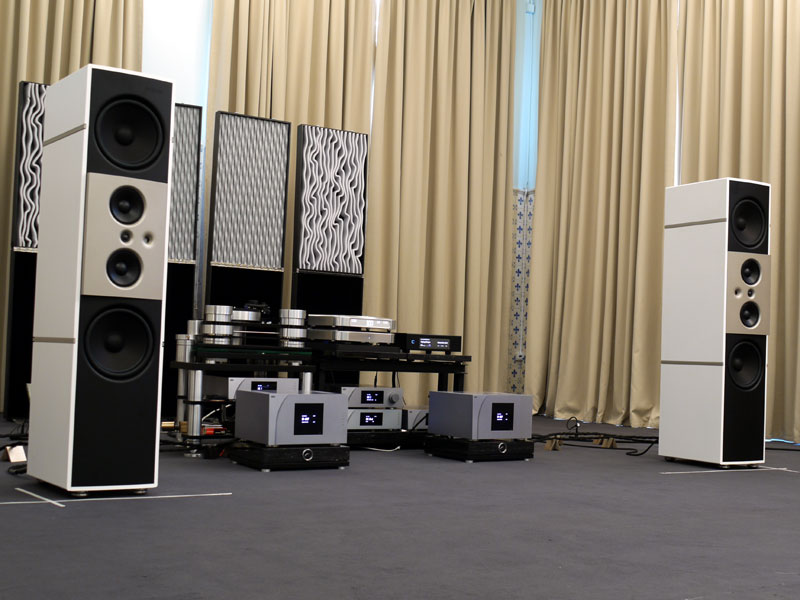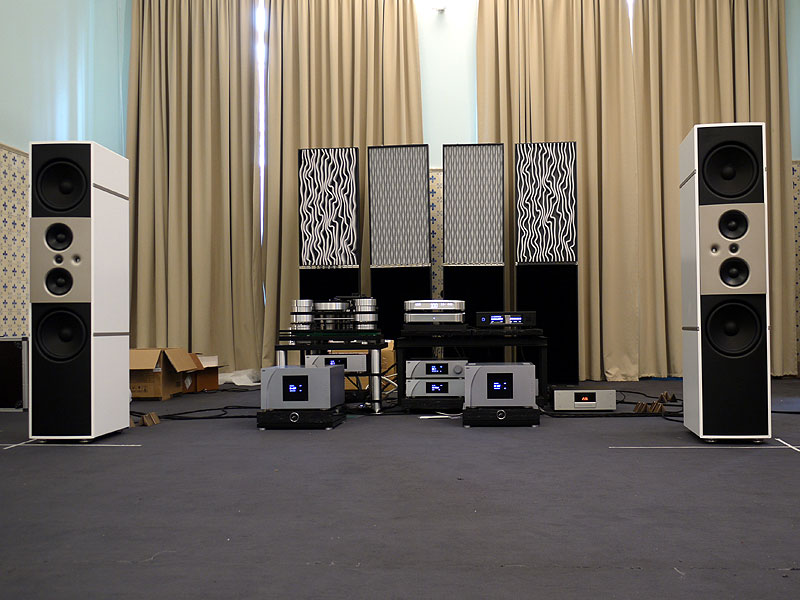Audio Show 2016 • Best of Show
Speaking of speakers, Stenheim’s “next to flagship” model (there’s a Reference Statement that adds a pair of active bass towers to the main cabinets) is an unusual beast. The cabinet is all aluminum in construction, with six discrete internal chambers. The two forward-firing 12” bass drivers are joined by a matching pair mounted on the rear baffle, each loaded by its own enclosure volume, the quartet driven actively as noted above via the CH Precision crossover. The D’Appolito mid/treble array consists of a pair of 7” midrange drivers either side of a soft-dome tweeter, flanked by a ribbon super-tweeter that extends out to 100kHz. All four drivers are mounted on a 20kg (44 pounds) sub-baffle that is motorized to allow remote control of toe-in. Sensitivity is quoted as 96dB -- no doubt aided by the active drive -- while the bandwidth extends down to 15Hz, (although no ± limits are available on that figure). Owners with a spare €95,000 lying around could of course opt to run the CH M1s as monoblocks, a pair for each speaker cabinet. The front-end was the impressive Rui Borges Pendulum turntable (€30,000), carrying a Kuzma 4Point tonearm and Ikeda Kai cartridge (another €13,000 together) feeding the new CH Precision P1 phono stage (€24,950) with multiple, independently configurable inputs. Perhaps the most interesting feature of the P1 is its approach to the issue of record EQ. With RIAA as the standard replay curve, owners have the option of adding a separate card carrying alternative curves for the likes of Decca and EMI. This means that those who don’t, won’t or can’t hear the benefits of switchable EQ, that don’t have records that require the facility, or have some quasi-religious objection to the very idea can ignore it, while those who do want or value it can get on with enjoying it in peace.
Installed in a massive, heavily treated space in what was once the palace stables and carriage house, this system managed to generate real scale, with a vast, coherent acoustic space and genuine musical energy that thrived on the unforced, engaging presentation of the Rui Borges turntable. Images were solid and instruments presented with a vibrant presence that was impressively convincing and communicative. The sound in this room was all about the music, the massive speaker cabinets disappearing completely as the system simply responded to the demands of the signal, with an agility and alacrity that were as surprising as they were entertaining. Despite the huge stack of hugely bluff boxes generating the sound, this was music as human activity, on a human scale and with a distinctly human flavor. You might well wonder what happened to digital media in
this system, but the combination of an Aurender W20 and MSB Select DAC was so
comprehensively musically eclipsed by the record player that we were surprised it got any
airtime at all. Fed with vinyl, this system did a remarkable job of demonstrating just
what high-end audio can and should be about. |


